We include products we think are useful for our readers. If you buy through links on this page, we may earn a small commission. Here’s our process.
Healthline only shows you brands and products that we stand behind.
Our team thoroughly researches and evaluates the recommendations we make on our site. To establish that the product manufacturers addressed safety and efficacy standards, we:- Evaluate ingredients and composition: Do they have the potential to cause harm?
- Fact-check all health claims: Do they align with the current body of scientific evidence?
- Assess the brand: Does it operate with integrity and adhere to industry best practices?
Skin problems, including ulcers, cracked skin, and poor wound healing, can be early signs of type 2 diabetes.
Skin problems may be the first visible signs of diabetes, according to the American Diabetes Association (ADA). Diabetes can make existing skin problems worse. New skin problems may also appear.
Type 2 diabetes affects how your body uses glucose, or sugar. Diabetes happens when your body either doesn’t respond effectively to insulin or doesn’t produce enough insulin to manage your blood sugar levels.
This can result in persistently high glucose levels, or hyperglycemia. Over time, high blood sugar can cause damage throughout your body. For example, it can damage blood vessels, leave you more prone to infections, and slow down wound healing.
These and other factors can lead to a range of skin problems.
Here are some of the reasons you might be more prone to skin problems if you have type 2 diabetes:
- Damage to blood vessels and nerves reduces circulation and blood flow to your skin. Decreased blood circulation can lead to changes in collagen, which can affect your skin’s texture, appearance, and ability to heal.
- White blood cells become less able to defend you against infections.
- Damage to skin cells can affect your ability to sweat and increase your sensitivity to temperature and pressure.
- Nerve damage, known as diabetic neuropathy, can reduce sensation, making it harder to notice wounds or injuries. If untreated, injuries can lead to complications.

Warning
Contains Sensitive Content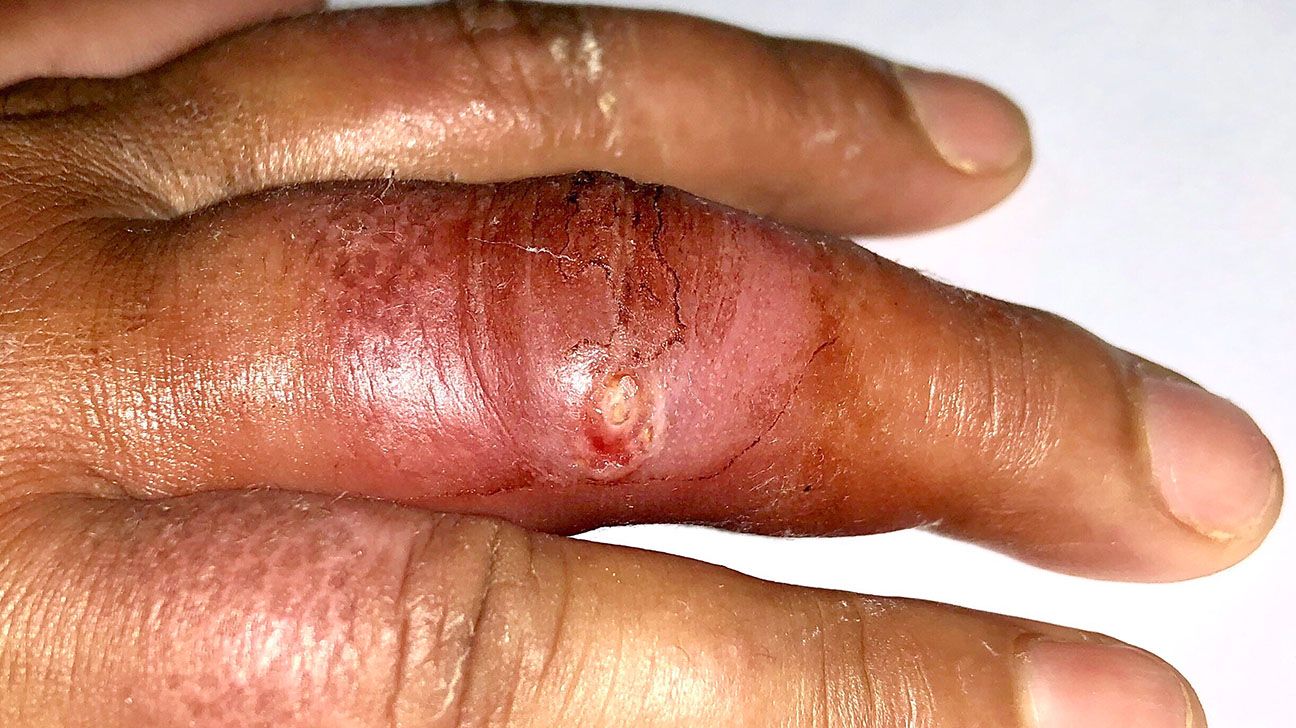
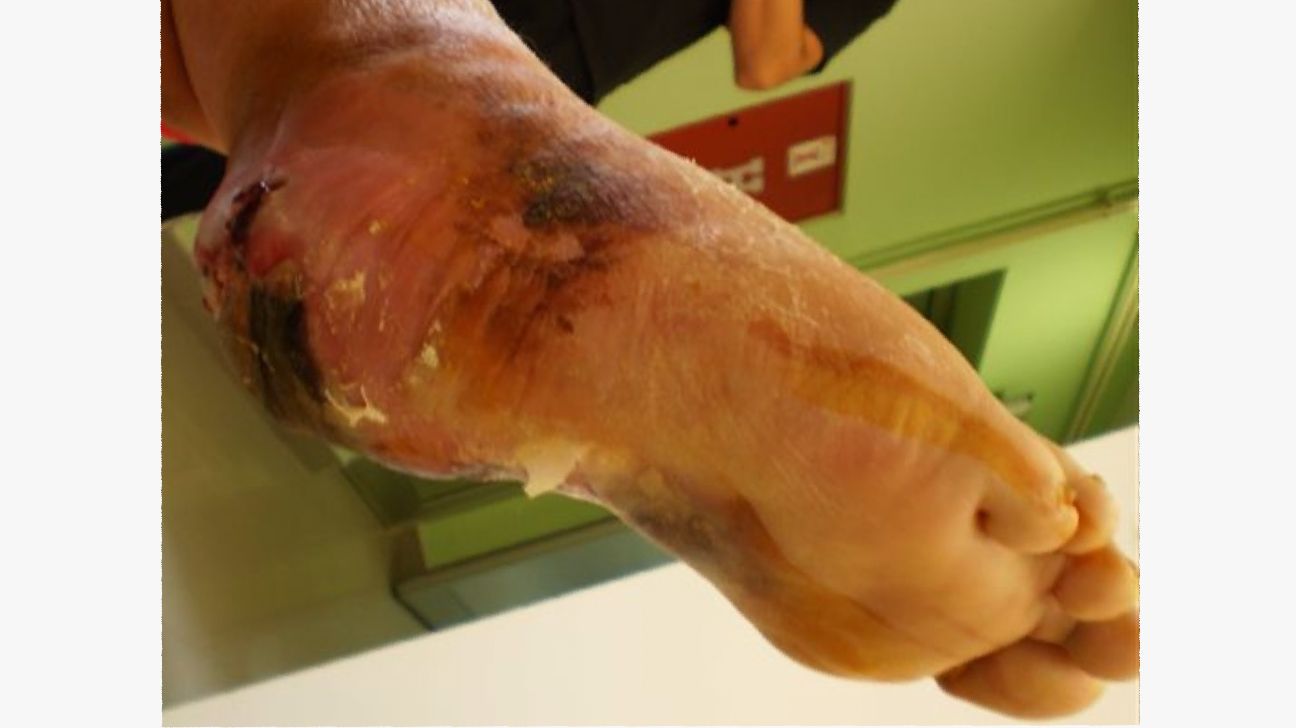
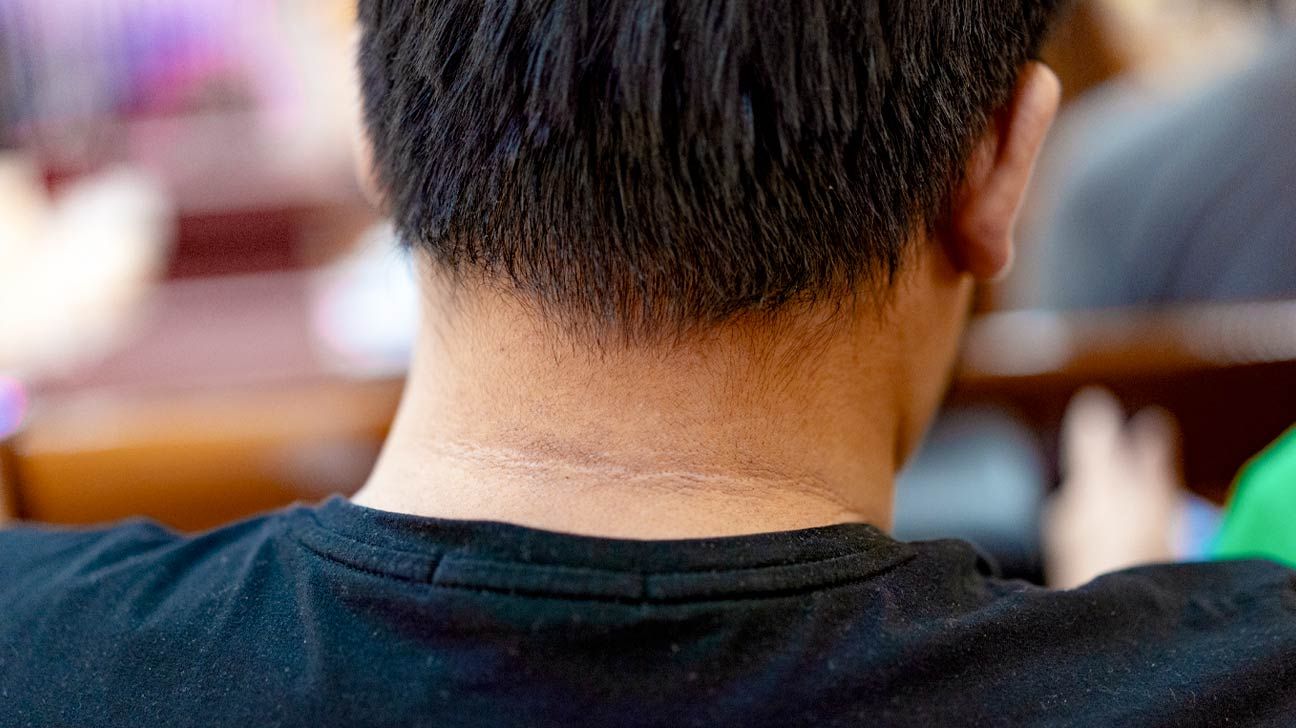
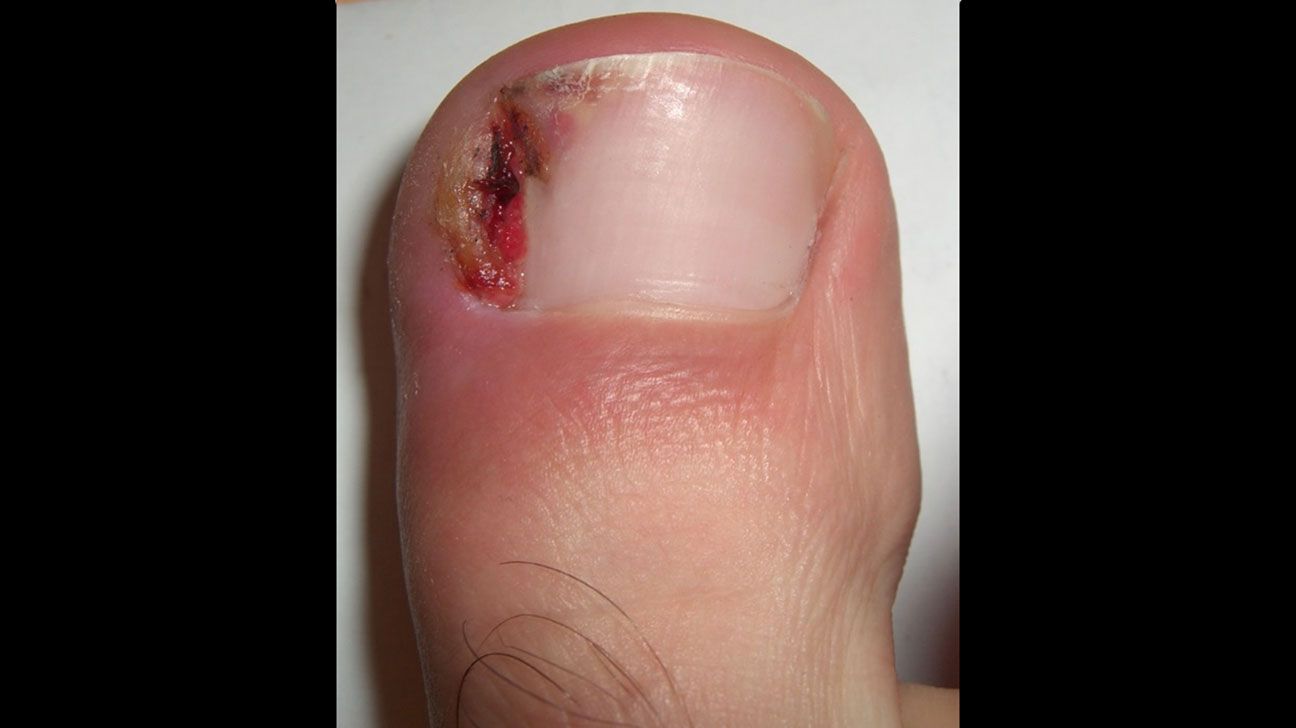
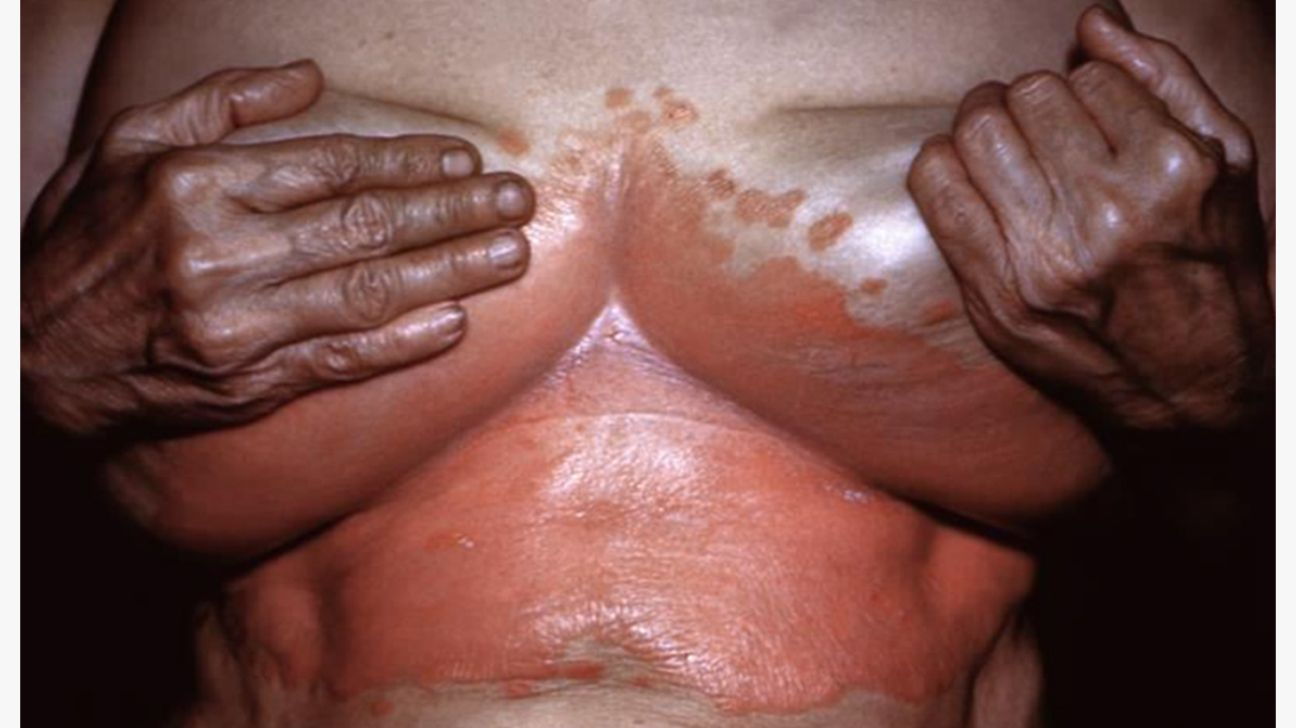
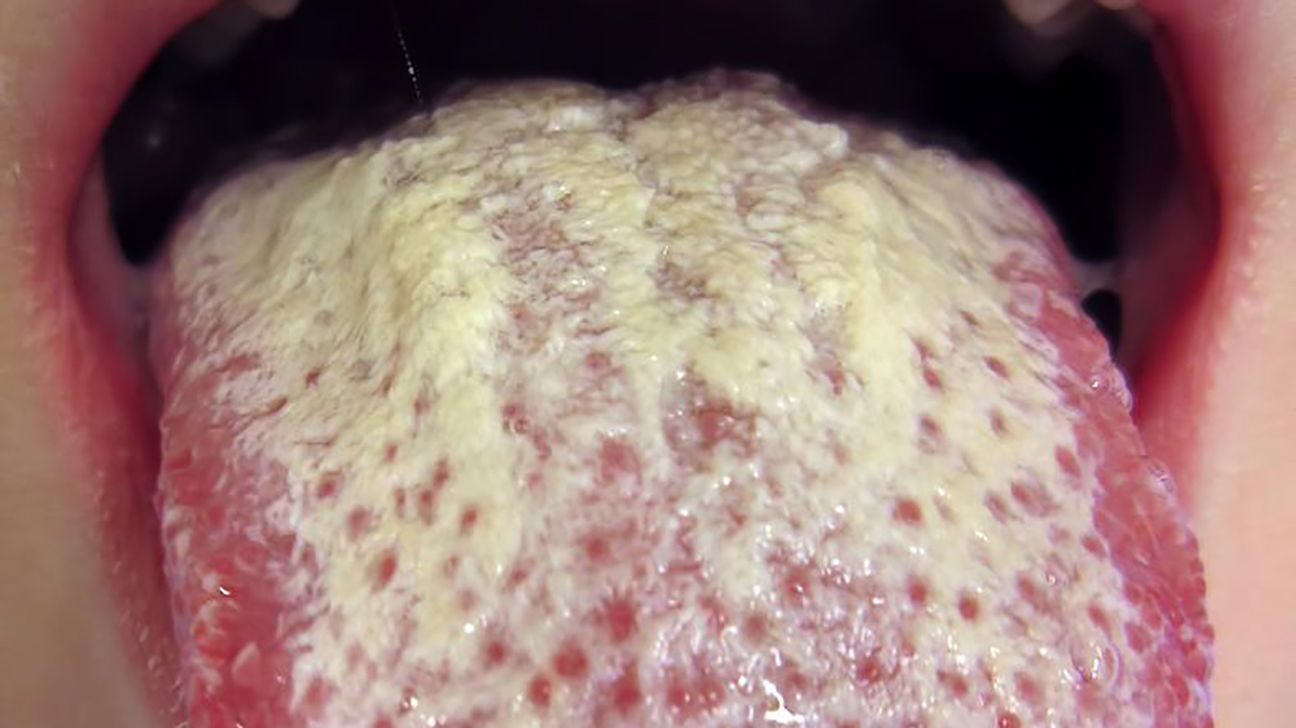
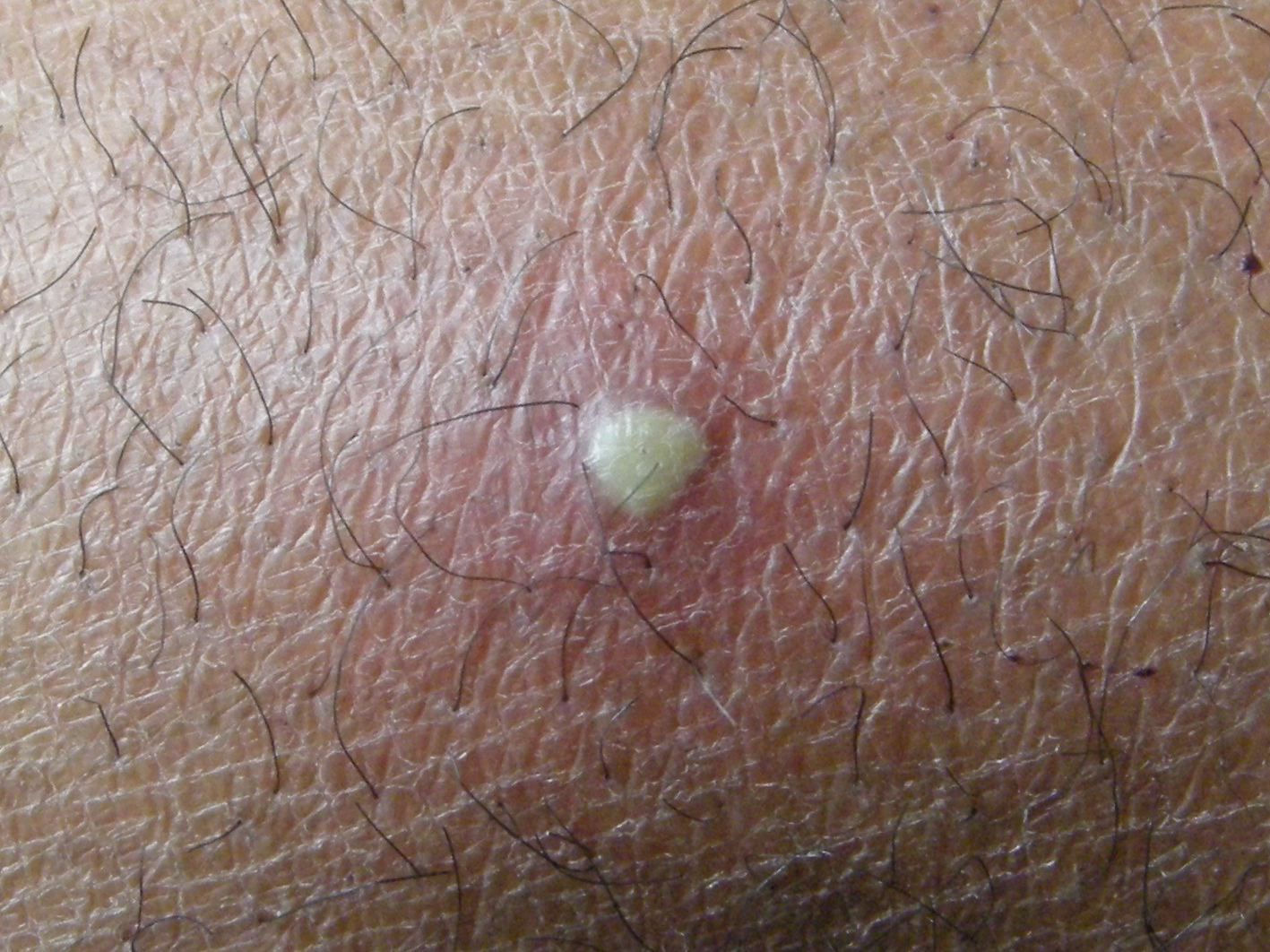
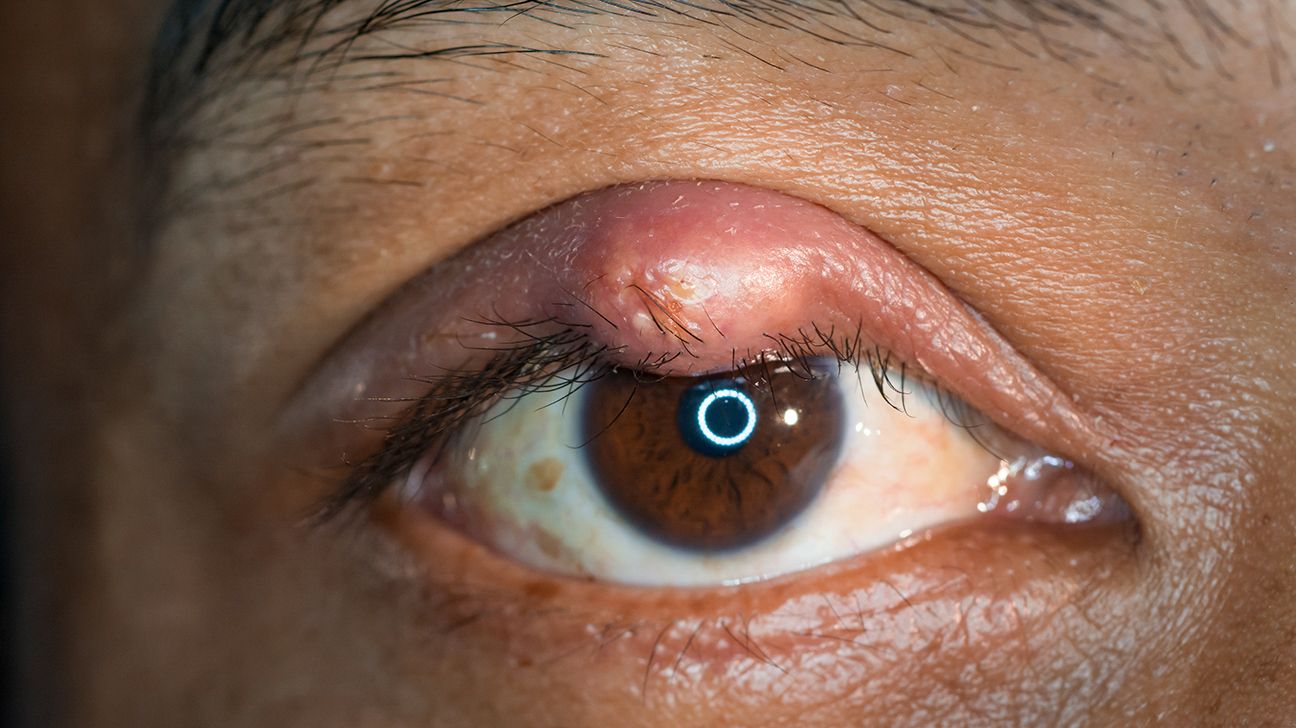
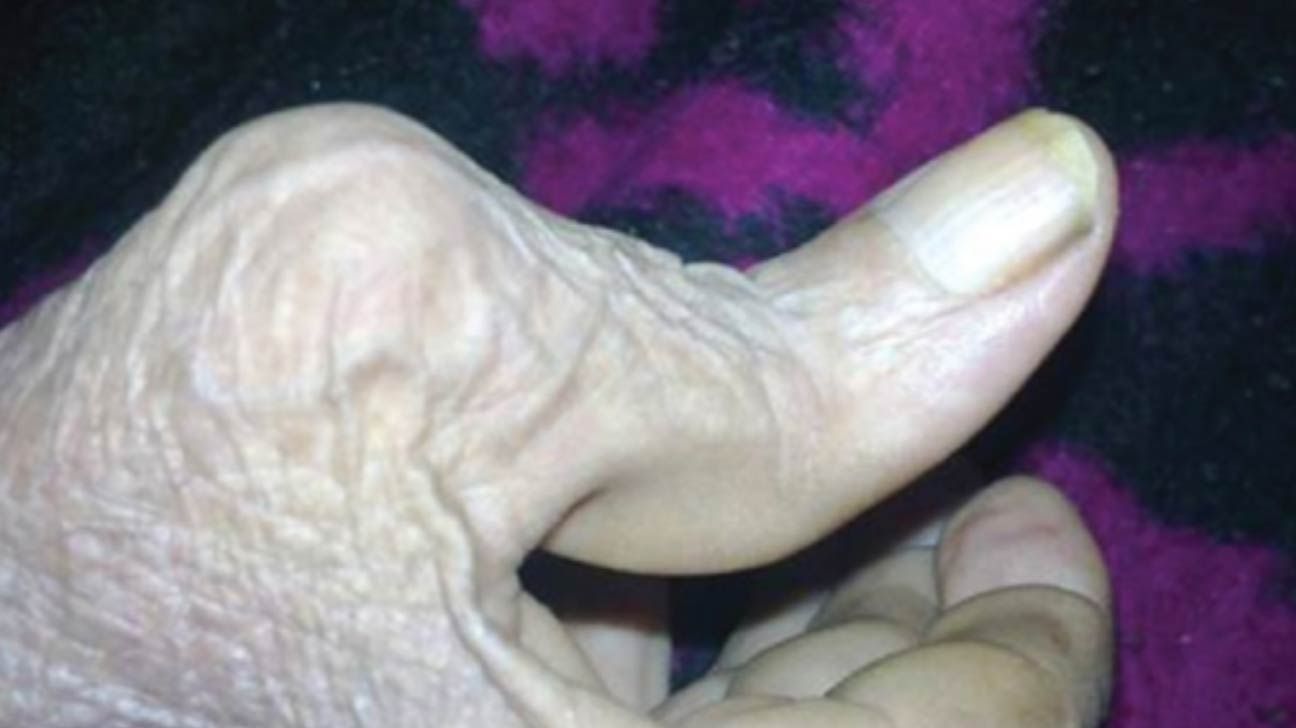
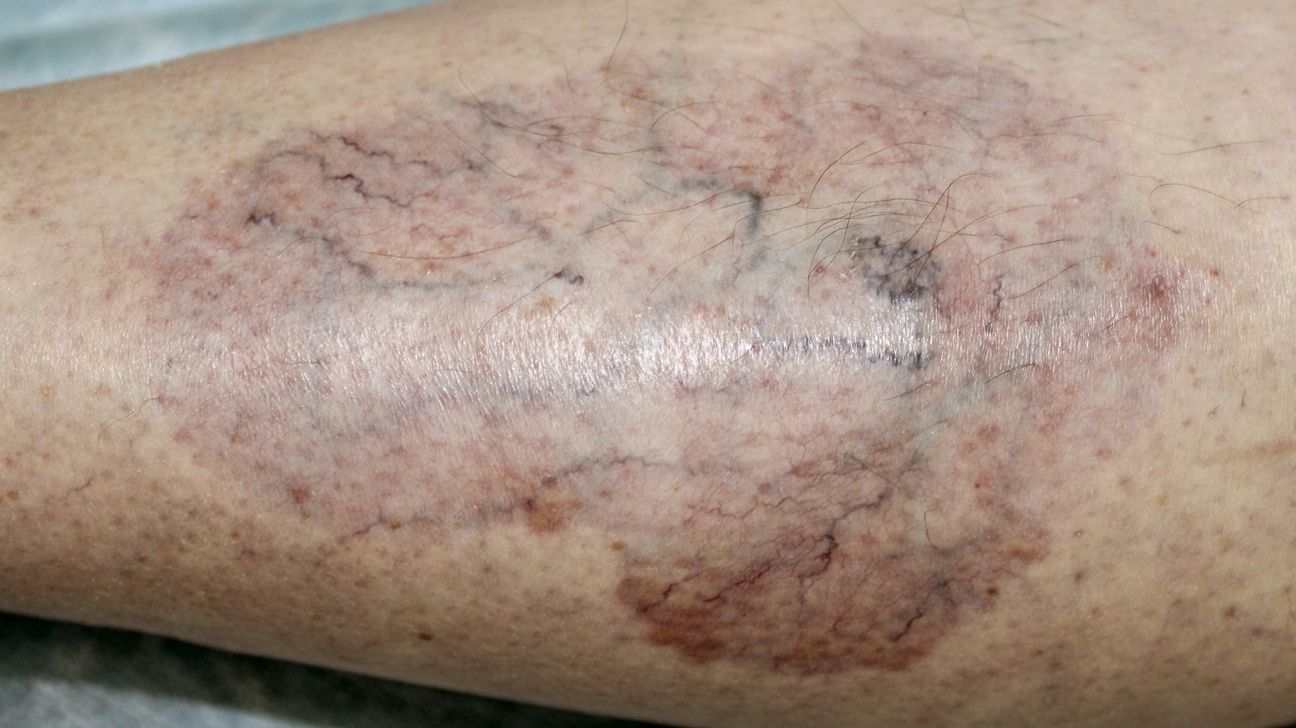
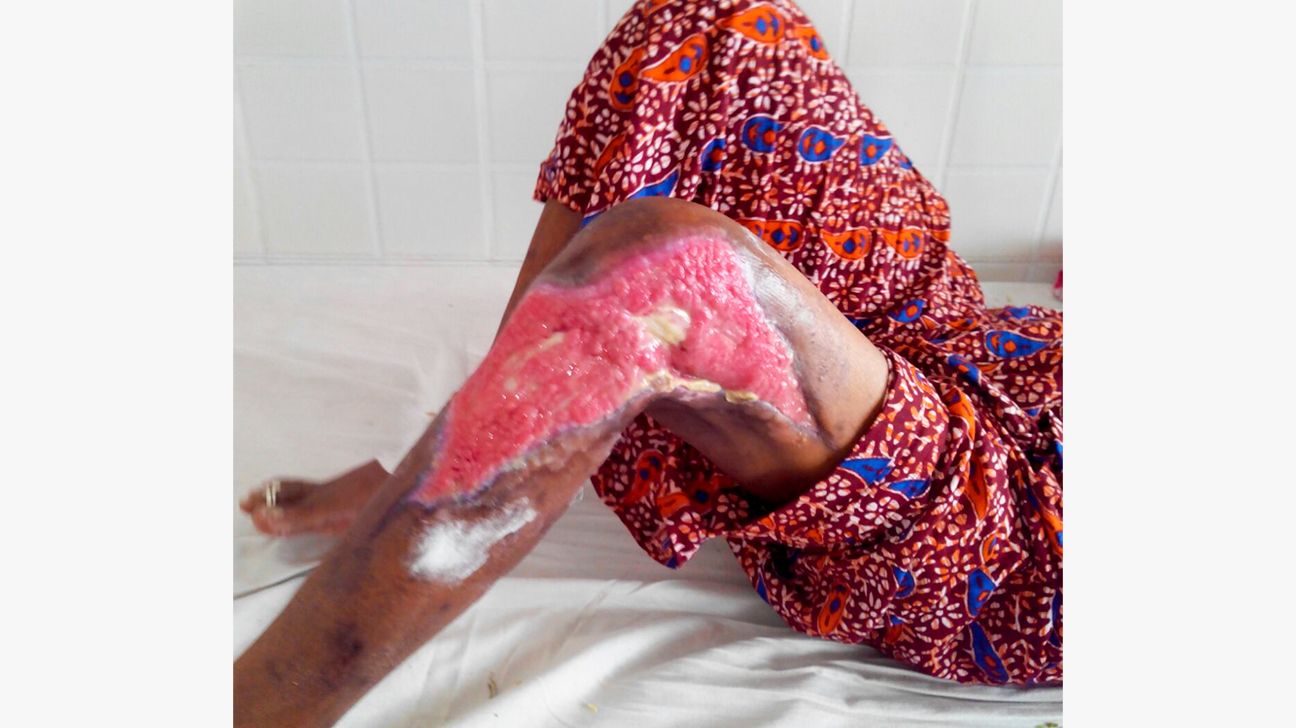
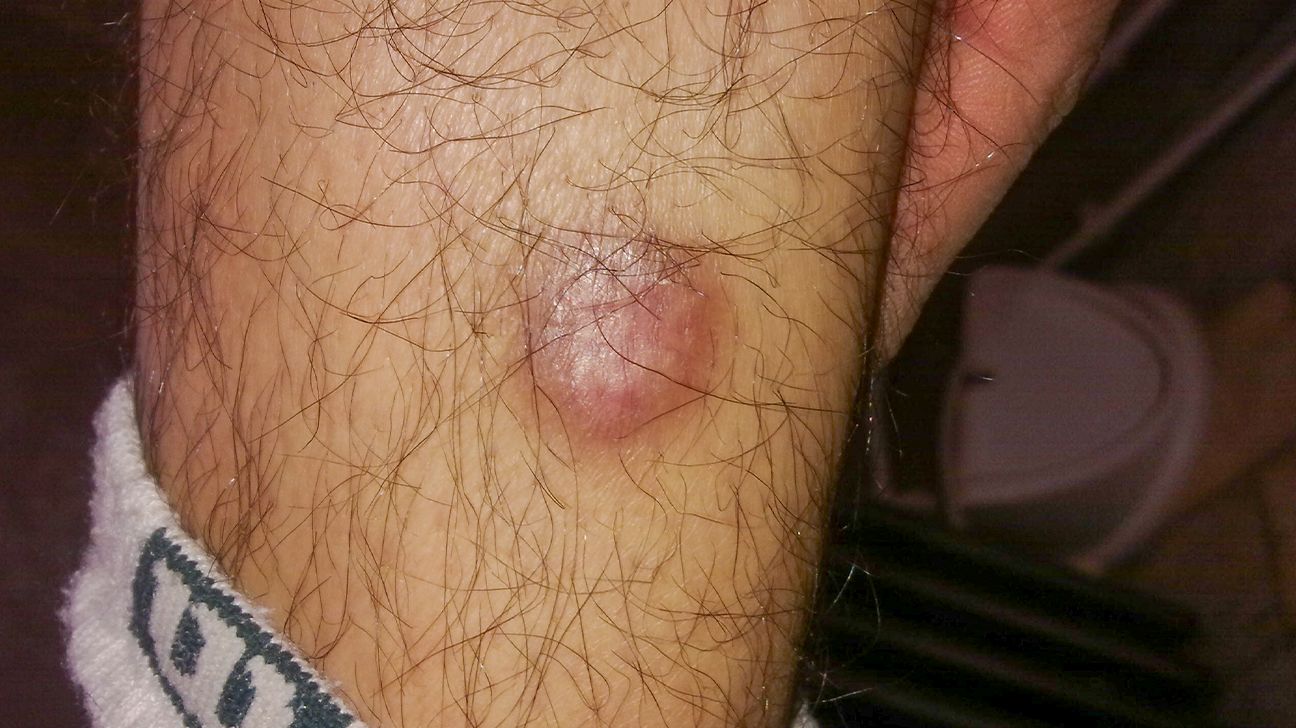
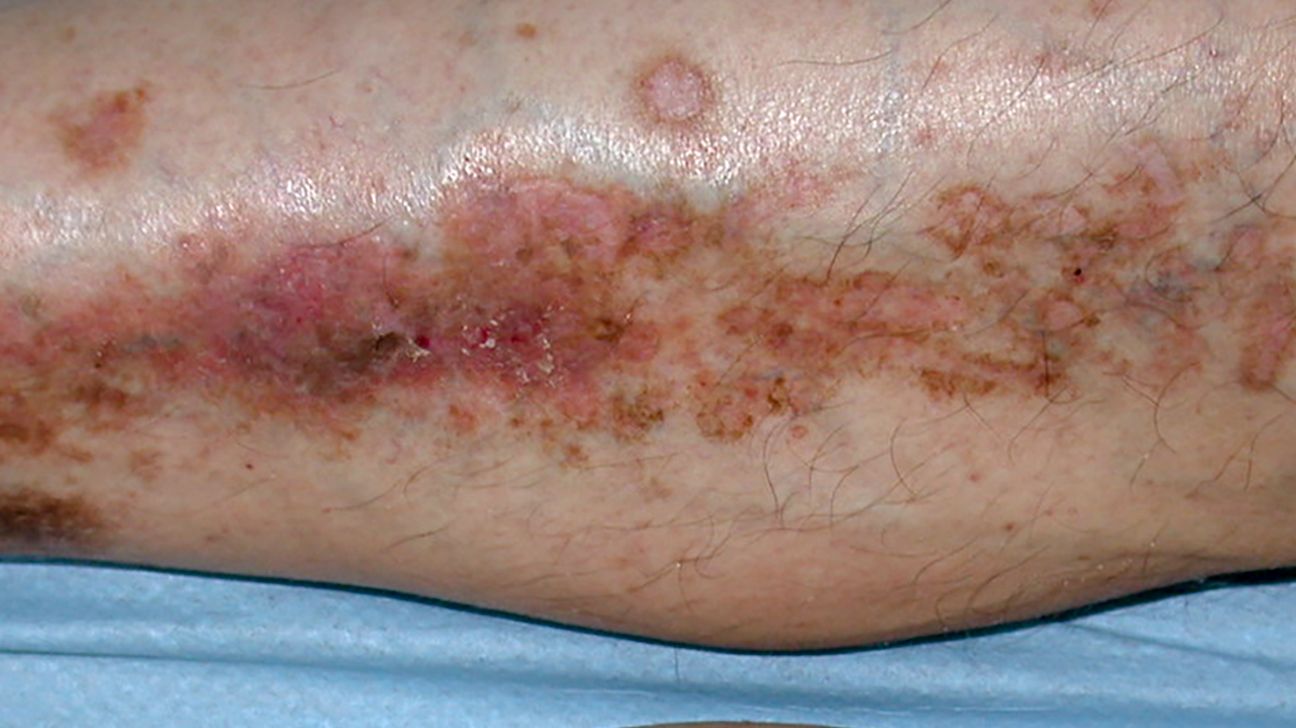
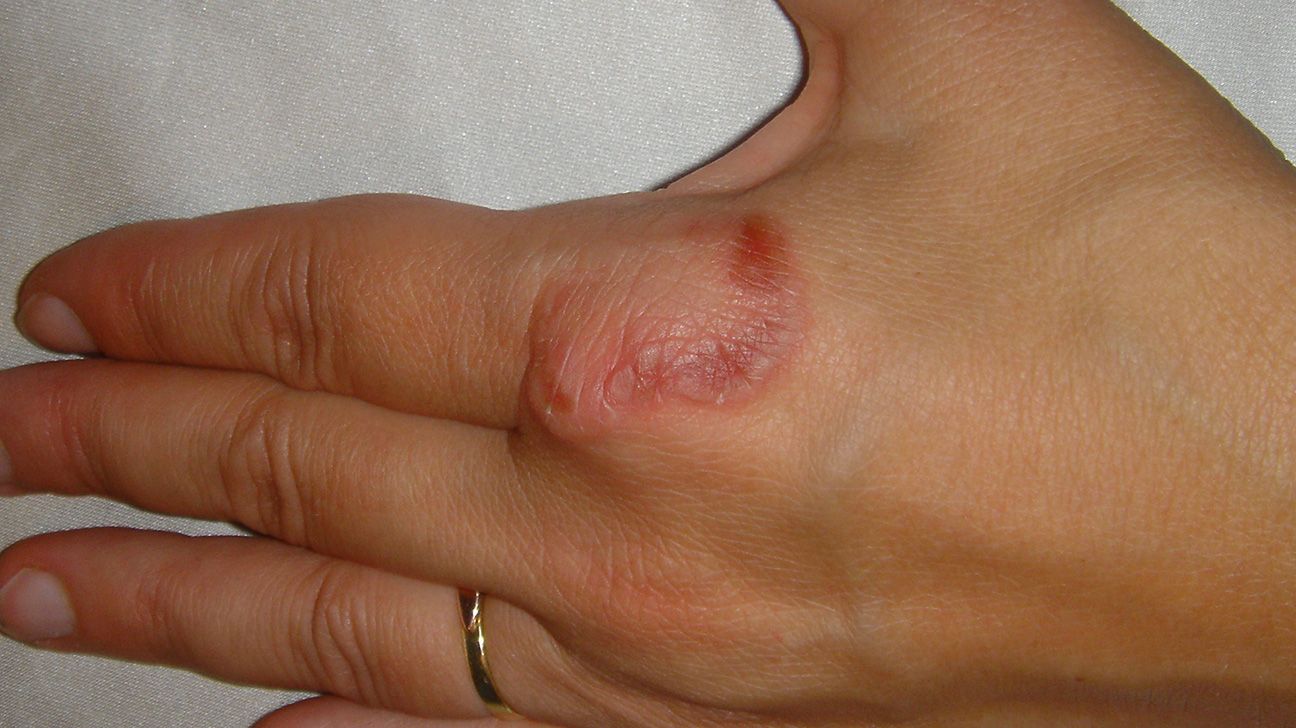
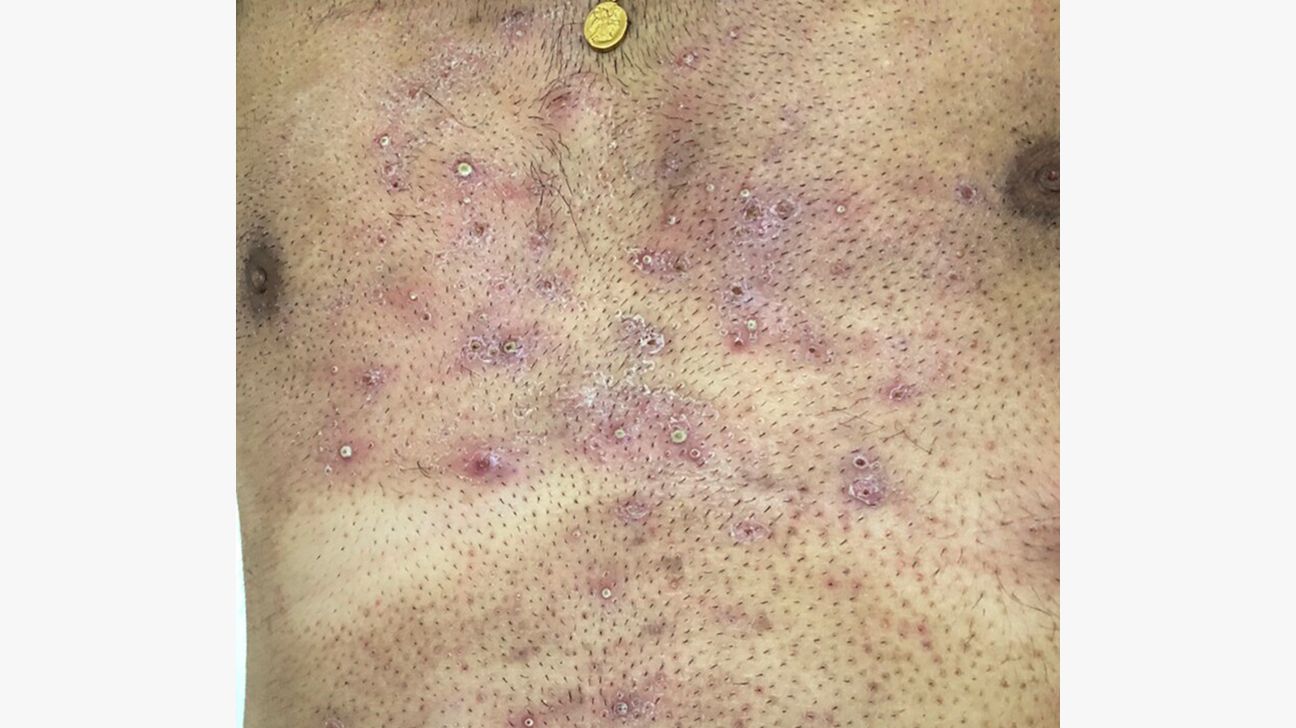
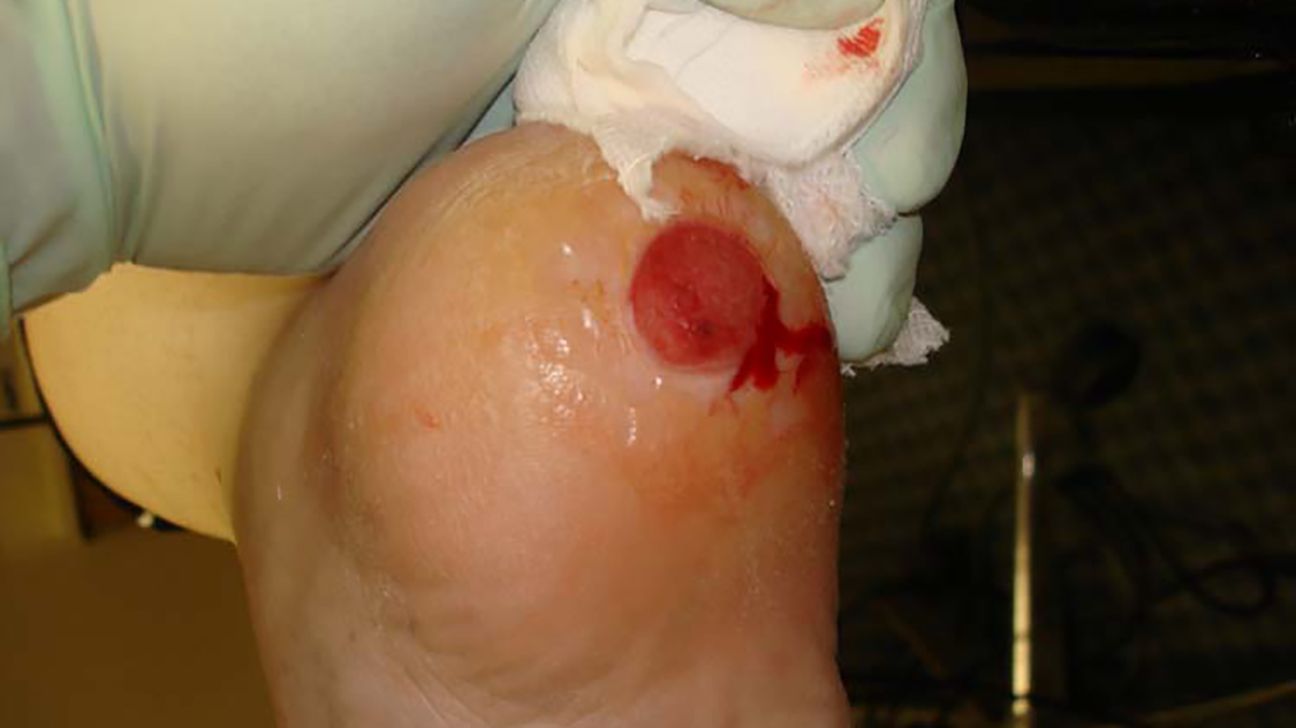
Up to 97 percent of people with diabetes will experience a related skin condition, according to a 2016
For this reason, if you have type 2 diabetes, it’s important to watch out for:
- changes in your skin
- injuries or irritation to the skin surrounding insulin injection sites
- cuts or wounds that are slow to heal, as slow-healing wounds are often entryways for secondary infections
- cuts or wounds that appear infected
Bacterial infections
Bacteria can cause skin infections. Most commonly, these bacteria are Staphylococcus, or staph.
Types of bacterial skin infections include:
- styes, which cause swelling on the eyelids
- boils
- folliculitis, an infection of the hair follicles
- carbuncles, deep infections of the skin and the tissue below it
- infections around the nails
In the affected area, you may notice:
- pain
- warmth
- swelling
- redness or darkening of the skin on darker skin tones
The symptoms may be more severe in people with persistently high blood sugar levels. If the skin is broken, it can be easier for bacteria to enter, making infections more likely.
Fungal infections
Fungal infections result from the growth and spread of fungus or yeast. Like bacterial infections, they can affect anyone. However, people with diabetes may be more susceptible, especially if they are unable to manage their blood sugar levels effectively.
One common cause of fungal infections is Candida albicans, a yeast-like fungus.
With this type of infection, you may notice:
- areas of red, itchy, swollen skin
- blistering or dry scales
- a white discharge that resembles cottage cheese
Yeast fungus thrives in the following areas:
- in the warm folds of the skin
- under the breasts
- in the groin
- in the armpits
- in the corners of the mouth
- under the foreskin of the penis
Common skin irritations such as athlete’s foot, jock itch, and ringworm are fungal infections. They can itch, spread, and worsen if not treated with prescription medication.
Did you know?Most skin irritations specific to people with type 2 diabetes are related to changes in the small blood vessels, which supply nutrition to the skin tissues.
The hallmark of diabetic dermopathy is the appearance of light brown, scaly patches of skin, often on the shins. These are known as “shin spots” and may be oval or circular.
Studies suggest that up to
It happens as a result of damage to the small blood vessels that supply nutrition and oxygen to the tissues.
It is not harmful but can be a symptom of more serious complications. For example, it is more likely to occur in people who also have retinopathy, neuropathy, or kidney disease.
If you notice these types of skin changes, it’s a good idea to consult your doctor. They may want to review your treatment plan.
NLD also features light brown oval or circular patches, but the lesions are deeper, larger, and fewer than in diabetic dermopathy.
NLD is a rare condition and usually occurs in type 1 diabetes.
The patches:
- first appear as firm, reddish-brown papules
1 to 3 millimeters (mm)Trusted Source across - become yellow and shiny as they expand
- can affect both sides of the body
- develop thinner, weaker, waxy skin in the center
- may look like a shiny scar with a violet border
- may be itchy
- may feature ulcers — for example, after a blow or other trauma to the area
- usually appear on the lower leg but sometimes on the arms, face, or scalp
Doctors don’t know precisely why NLD occurs, but it may result from a breakdown in collagen.
There is no specific treatment for NLD. Up to
This skin condition causes the skin on the hands, fingers, and toes to become thick, tight, waxy, and potentially stiff. The affected joints may become harder to move. It affects around 1 in 3 people with type 1 diabetes.
High blood sugar can increase the risk of developing digital sclerosis.
Treatment options include applying lotions or moisturizers and managing blood sugar levels.
Disseminated granuloma annulare appears as ring-shaped rashes of raised bumps. These bumps may appear red or red-brown on lighter skin tones or pink or purplish on darker skin tones, or they may be the same color as your skin. They commonly affect the hands or feet.
They’re harmless, and medications are available for treatment.
AN is a condition in which skin becomes hyperpigmented in skin folds.
The patches may:
- be darker and thicker than the surrounding skin
- be velvety in texture
- have ill-defined borders
They often appear in the following areas:
- neck
- groin
- armpits
- elbows
- knees
AN is a symptom of insulin resistance and can be an early symptom of diabetes. It often affects people with obesity and may go away if a person loses weight.
Rarely, people with diabetes may develop blisters that look like burns, known as bullosis diabeticorum.
They usually occur in people who have diabetic neuropathy and tend to appear on the:
- backs of the fingers and toes
- hands and feet
- legs and forearms, in some cases
They usually heal in around 3 weeks and do not tend to leave scars. Managing blood glucose levels may help reduce the risk of these blisters.
Itching may be due to an infection, dry skin, or inadequate circulation. In people with diabetes, it may affect the lower legs in particular.
It is important to avoid scratching, as this can break the skin and make it more susceptible to infection.
Managing blood glucose levels can help treat and reduce the risk of diabetes-related skin conditions.
Other treatment options include:
- over-the-counter (OTC) treatments
- prescription treatments
- alternative remedies
- lifestyle habits for managing diabetes
OTC remedies
The following OTC remedies can help manage certain skin conditions associated with type 2 diabetes:
- nonprescription antifungals, such as clotrimazole (Lotrimin AF, Mycelex)
- topical steroid medications, such as those containing 1 percent hydrocortisone
- moisturizers and lotions to relieve dryness
Prescription medications
In some cases, a doctor will prescribe medications or other treatments such as:
- topical or oral antibiotics to treat skin infections
- stronger antifungal medications
- insulin therapy or other drugs to manage blood sugar levels
Some conditions may benefit from specific treatments.
Bacterial infections, such as carbuncles, may need to be pierced by a doctor and drained. A doctor may also prescribe antibiotics.
For NLD, a doctor may recommend light therapy, corticosteroids, or other drugs.
Steroids, phototherapy, and various drugs may
Alternative remedies
Some non-drug remedies for diabetes-related skin problems are:
- talcum powder to prevent friction in skin folds
- lotion formulated for dry skin, which can reduce itching
- aloe vera used topically (not orally)
Before using any natural or alternative remedies, consult your doctor. Even all-natural herbal supplements can interfere with any medications you’re currently taking.
Lifestyle options
It is not always possible to avoid diabetes, but some lifestyle habits may have an impact, including:
- following a varied, diabetes-friendly diet
- maintaining an exercise program
- monitoring your blood sugar and taking measures to manage it
Lifestyle changes that may help with type 2 diabetes-related skin problems include:
- taking measures to prevent dry skin
- avoiding scratching dry skin, which increases the risk of infections by breaking the skin
- treating wounds immediately
- keeping your home humid during dry months
- avoiding hot baths or showers, which can dry out your skin
- inspecting your feet daily, especially if you have neuropathy, which can affect sensation
Each person is different, so make sure to consult your doctor before changing your diet or exercise program.
Proper blood sugar management can often help prevent or reduce skin problems that arise with diabetes. Conversely, some skin conditions can signal that glucose levels need to be addressed.
Various treatment options are also available, depending on the problem.
The outlook will depend on the skin condition. It’s best to consult a doctor if you notice new or worsening symptoms, as these may indicate that you need to review your diabetes treatment.
If you develop ulcers, seek medical advice as soon as possible.
What does a diabetic skin rash look like?
Various skin changes can occur with diabetes, such as granuloma annulare, a ring-shaped rash of raised bumps that may appear red, red-brown, pink, purplish, or the same color as your skin.
What does a diabetic spot look like?
One skin symptom that can appear with diabetes is NLD. The first sign is spots, or papules, up to 3 mm across that then expand to become yellow-brown patches with a waxy center. In time, ulcers can form — for example, if the skin breaks.
People with diabetes are also more prone to bacterial and viral infections such as Candida albicans.
Does your skin itch if you have diabetes?
Causes of skin itching with diabetes include infections, dry skin, and reduced circulation. Inadequate circulation may cause itching in the lower legs. The lesions that occur with NLD can also be itchy.
Diabetes happens when your body cannot use insulin effectively to manage your blood sugar levels. Persistently high blood sugar levels can cause damage throughout your body. In some cases, this may lead to skin changes.
Some skin conditions require medical attention — for example, infections and ulcers require treatment to prevent them from becoming worse. Other skin changes, such as AN, can be a signal that blood sugar levels are too high.
In this case, a doctor may recommend reviewing your treatment plan.






